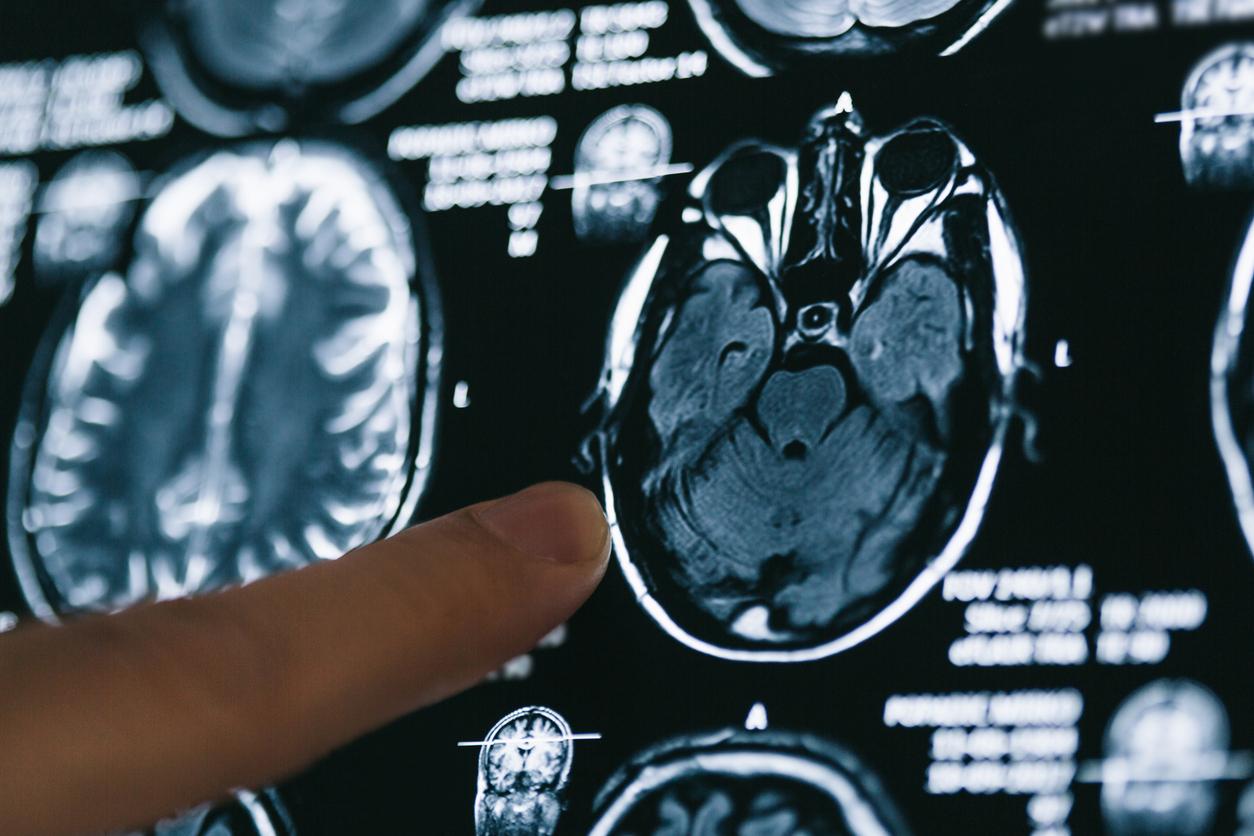A study finds that in Alzheimer’s disease, the brain suffers damage long before symptoms appear, which could pave the way for early treatments.

- According to scientists, Alzheimer’s acts in two phases. The first, slow and discreet, begins well before symptoms appear. During this period, only certain types of cells are affected, notably so-called “inhibitory” neurons.
- It is only during the second phase that the damage becomes more visible, marked by massive destruction of neurons and the appearance of characteristic clinical signs such as memory loss.
- “For the first time, we can observe the first changes in the brain, opening the way to earlier and potentially more effective treatments”, making it possible to slow down, or even stop, the progression of the disease before it becomes irreversible. .
What if it didn’t progress in a linear manner, but in two distinct stages? Traditionally, Alzheimer’s disease is viewed as a progressive decline, marked by the accumulation of amyloid plaques, tau protein tangles, and neuron death. A new study, published in the journal Nature Neurosciencenow suggests that the brain actually suffers damage well before symptoms appear, during a so-called silent phase. A discovery that could revolutionize our understanding of neurodegenerative disease and lead to more effective treatments.
Brain damage long before the first symptoms
To achieve this finding, researchers from the Allen Institute in Seattle, United States, examined the brains of 84 people with Alzheimer’s, using advanced brain mapping tools to study certain regions involved in memory, language and vision. By comparing the data with those from healthy donors, they established a genetic and cellular “timeline” of the changes caused by the disease.
Thus, according to scientists, Alzheimer’s disease acts in two phases. The first, slow and discreet, begins well before symptoms appear. During this period, only certain types of cells are affected, notably so-called “inhibitory” neurons. It is only during the second phase that the damage becomes more visible, marked by massive destruction of neurons and the appearance of characteristic clinical signs such as memory loss.
“One of the difficulties in diagnosing and treating Alzheimer’s is that the majority of brain damage occurs well before symptoms appear.explain the scientists in a press release. For the first time, we can observe early changes in the brain, paving the way for earlier and potentially more effective treatments.” Indeed, if this first silent phase can be identified, it becomes possible to develop therapies aimed at slowing down, or even stopping, the progression of the disease before it becomes irreversible.

The role of inhibitory neurons in Alzheimer’s disease
One of the strengths of the study is the discovery of the role of inhibitory neurons, called SST neurons, which have until now been little studied in the context of Alzheimer’s. These cells, essential for regulating brain activity by sending “calming” signals to other neurons, appear to be among the first victims of the disease. Their degeneration could be a trigger for disruptions in neuronal circuits, precipitating cognitive decline.
Researchers suggest that the loss of these inhibitory neurons could upset the balance between activation and inhibition signals in the brain, leading to a cascade of damaging events. This contrasts with the previous view which focused primarily on “exciting” neurons, those sending activation signals.

















